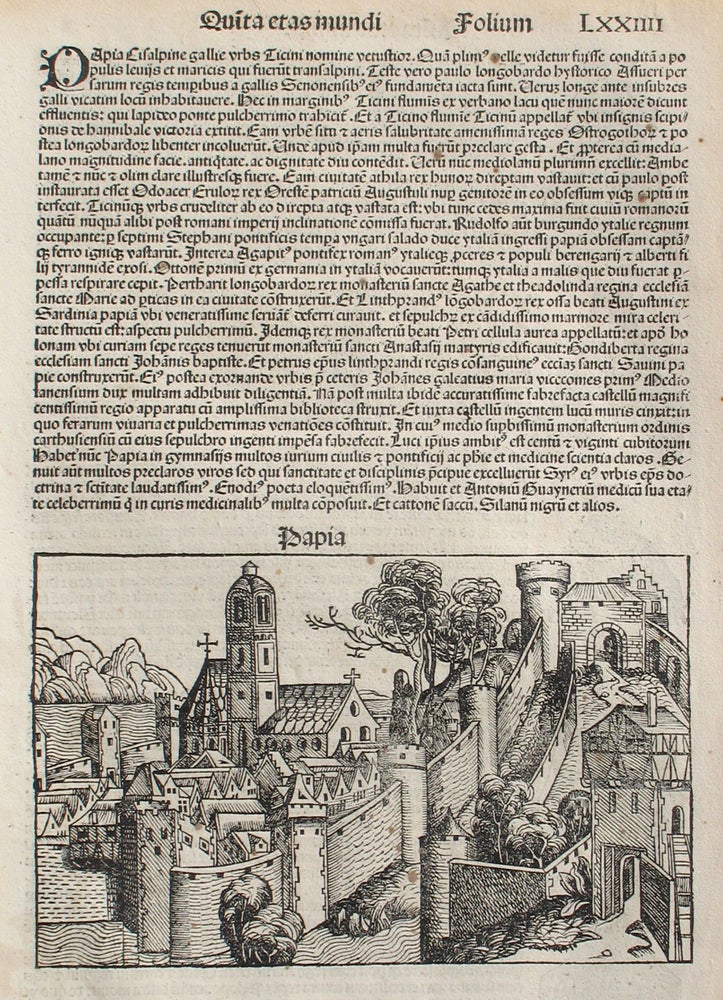Pavia, Italy in the Liber chronicarum- Nuremberg Chronicle, an individual page from the Chronicle featuring Papia/Pavia, (Italy) Plate No. LXXIIII.
Germany: Anton Koberger, ca 1460-1494. First edition. This work by Schedel [1440-1514] is an illustrated world history which is based on the Bible, which follows the story of human history related in the Bible and includes the histories of a number of important Western cities. Written in Latin by Hartmann Schedel it appeared in 1493. It is a well documented incunabulum, one of the first to successfully combine illustrations and text.
This epic history divides human history into seven ages. Published and printed by Anton Koberger, the godfather of Albrecht Durer and the most successful German publisher of his day. The woodcut illustrations were made in the workshop of Michael Wolgemut [1434 - 1519], with an unpredcedented number of 1,809 illustrations. These woodblocks include views of cities and towns, battles, kings, and saints. Some images represent actual cities, and other images are purely imaginative.
This print is of Papia (now Pavia) in Northern Italy. The image is a generic one used for several cities described in the Nuremberg Chronicle, and shows a walled city with churches on the left and in the background, another walled area or gate to the city up a hill to the right. The verso describes the great philosophers and king of this time: Hermes of Egypt or Mercury, Apuleius of Madaura in Africa, Plotinus, Diogenes of Sinop, Philip the twenty-third king of the Macedonians (father to Alexander the Great). Approximately 12 x 17 1/4", b & w, slt. tide mark in left margin not affecting images. Remarkably clean crisp images. Very good condition. Item #21643
Price: $220.00


